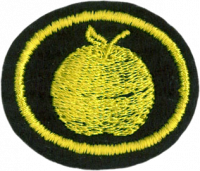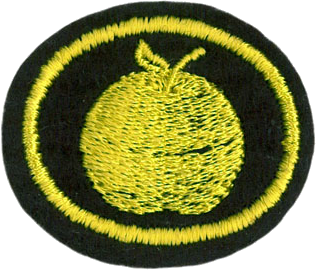Difference between revisions of "AY Honors/Fruit Growing/Answer Key/es"
From Pathfinder Wiki
< AY Honors | Fruit GrowingAY Honors/Fruit Growing/Answer Key/es
(Created page with "</noinclude> <!-- 3. ¿Qué lugar y qué condiciones de suelo se necesitan para crecer tres de los siguientes árboles? -->") |
(Updating to match new version of source page) |
||
| (6 intermediate revisions by one other user not shown) | |||
| Line 1: | Line 1: | ||
| − | + | {{HonorSubpage}} | |
| − | |||
| − | {{ | ||
| − | |||
| − | |||
| − | |||
| − | |||
| − | |||
| − | |||
| − | |||
| − | }} | ||
| − | |||
| − | |||
| − | |||
<section begin="Body" /> | <section begin="Body" /> | ||
{{ansreq|page={{#titleparts:{{PAGENAME}}|2|1}}|num=1}} | {{ansreq|page={{#titleparts:{{PAGENAME}}|2|1}}|num=1}} | ||
<noinclude></noinclude> | <noinclude></noinclude> | ||
| − | <!-- 1. ¿Por qué son los árboles frutales injertados? --> | + | <!-- 1. ¿Por qué son los árboles frutales injertados? --> |
{{clear}} | {{clear}} | ||
| Line 38: | Line 25: | ||
{{ansreq|page={{#titleparts:{{PAGENAME}}|2|1}}|num=4}} | {{ansreq|page={{#titleparts:{{PAGENAME}}|2|1}}|num=4}} | ||
<noinclude></noinclude> | <noinclude></noinclude> | ||
| − | <!-- 4. | + | <!-- 4. ¿Qué es un árbol frutal enano? ¿Cómo se convierte en enano? --> |
| − | |||
<noinclude></noinclude> | <noinclude></noinclude> | ||
| Line 45: | Line 31: | ||
{{ansreq|page={{#titleparts:{{PAGENAME}}|2|1}}|num=5}} | {{ansreq|page={{#titleparts:{{PAGENAME}}|2|1}}|num=5}} | ||
<noinclude></noinclude> | <noinclude></noinclude> | ||
| − | <!-- 5. | + | <!-- 5. Sembrar al menos dos árboles frutales y darles forma podándolos por lo menos dos temporadas, o dar forma y podar un árbol existente. Bajo supervisión, fertilizar según sea necesario para una temporada de crecimiento. Mostrar un ejemplo del producto de la cosecha de frutas a su examinador. --> |
{{clear}} | {{clear}} | ||
| Line 61: | Line 47: | ||
{{ansreq|page={{#titleparts:{{PAGENAME}}|2|1}}|num=6}} | {{ansreq|page={{#titleparts:{{PAGENAME}}|2|1}}|num=6}} | ||
<noinclude></noinclude> | <noinclude></noinclude> | ||
| − | <!-- 6. | + | <!-- 6. Responder las siguientes preguntas: --> |
<noinclude></noinclude> | <noinclude></noinclude> | ||
{{ansreq|page={{#titleparts:{{PAGENAME}}|2|1}}|num=6a}} | {{ansreq|page={{#titleparts:{{PAGENAME}}|2|1}}|num=6a}} | ||
| Line 81: | Line 67: | ||
{{ansreq|page={{#titleparts:{{PAGENAME}}|2|1}}|num=7}} | {{ansreq|page={{#titleparts:{{PAGENAME}}|2|1}}|num=7}} | ||
<noinclude></noinclude> | <noinclude></noinclude> | ||
| − | <!-- 7. | + | <!-- 7. ¿Cómo se protegen los árboles jóvenes de los daños de roedores? Proteger sus árboles jóvenes de los roedores. --> |
| − | |||
{{clear}} | {{clear}} | ||
| − | + | {{clear}} | |
<noinclude></noinclude> | <noinclude></noinclude> | ||
| Line 92: | Line 77: | ||
{{ansreq|page={{#titleparts:{{PAGENAME}}|2|1}}|num=8}} | {{ansreq|page={{#titleparts:{{PAGENAME}}|2|1}}|num=8}} | ||
<noinclude></noinclude> | <noinclude></noinclude> | ||
| − | <!-- 8. | + | <!-- 8. Comparar las cualidades de sabor, textura y la apariencia de dos diferentes variedades de la misma fruta. --> |
| − | |||
<noinclude></noinclude> | <noinclude></noinclude> | ||
| Line 103: | Line 87: | ||
[[Category:Adventist Youth Honors Answer Book/es]] | [[Category:Adventist Youth Honors Answer Book/es]] | ||
<noinclude></noinclude> | <noinclude></noinclude> | ||
| − | + | {{CloseHonorPage}} | |
Latest revision as of 21:54, 2 April 2021
1
¿Por qué son los árboles frutales injertados?
2
¿Qué quiere decir rusticidad?
3
¿Qué lugar y qué condiciones de suelo se necesitan para crecer tres de los siguientes árboles?
- a. Manzanas
- b. Melocotones
- c. Peras
- d. Ciruelas
- e. Cerezas
- f. Naranjas
- g. Una elección equivalente que crezca en su área, no mencionada en las anteriores
4
¿Qué es un árbol frutal enano? ¿Cómo se convierte en enano?
5
Sembrar al menos dos árboles frutales y darles forma podándolos por lo menos dos temporadas, o dar forma y podar un árbol existente. Bajo supervisión, fertilizar según sea necesario para una temporada de crecimiento. Mostrar un ejemplo del producto de la cosecha de frutas a su examinador.
6
Responder las siguientes preguntas:
6a
¿Qué es la polinización?
6b
¿Qué es un polinizador?
6c
¿Qué árboles necesitan un polinizador?
7
¿Cómo se protegen los árboles jóvenes de los daños de roedores? Proteger sus árboles jóvenes de los roedores.
8
Comparar las cualidades de sabor, textura y la apariencia de dos diferentes variedades de la misma fruta.


